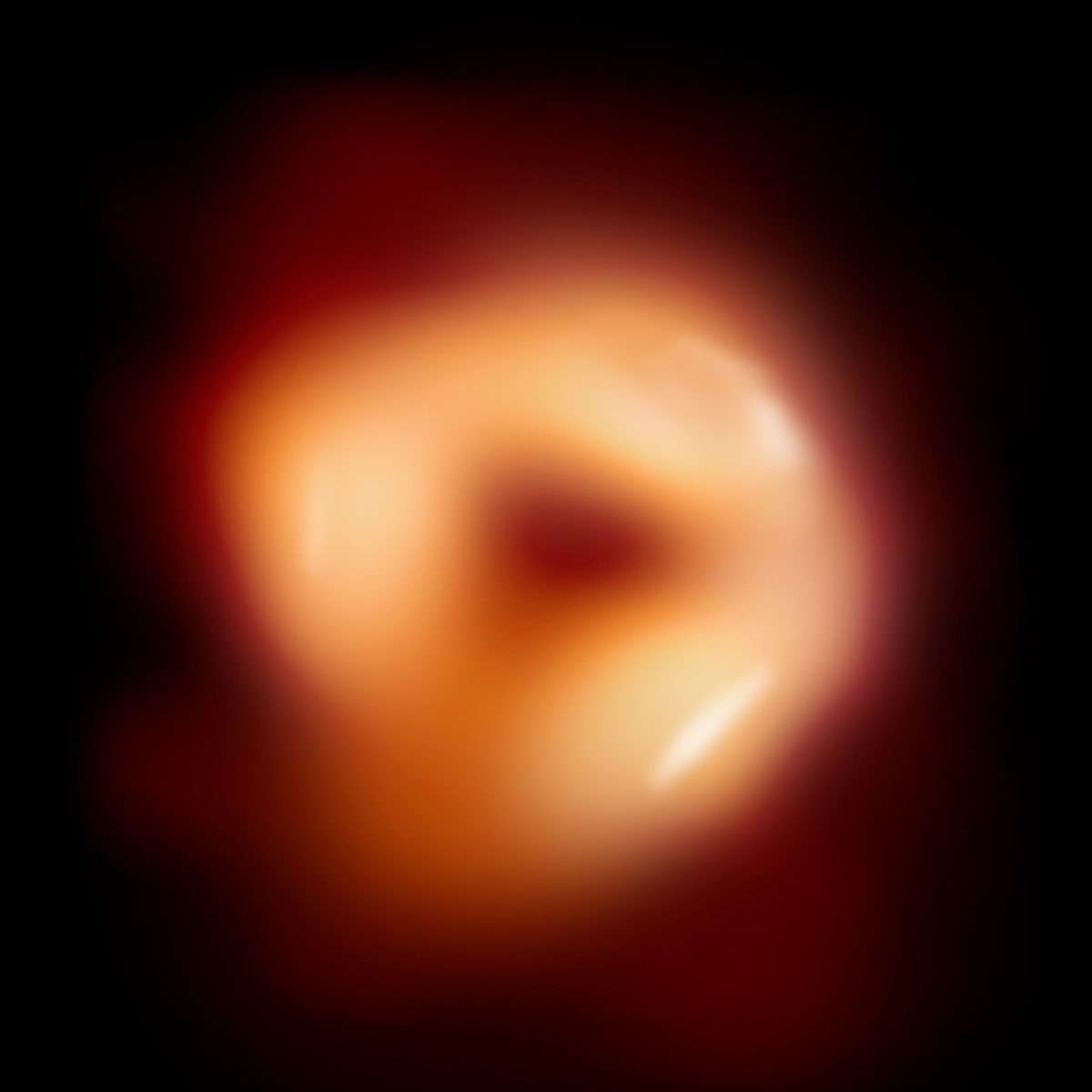A new image in polarized light of Sagittarius A has been unveiled by the Event Horizon Telescope (EHT) array.
Sagittarius A, which has a mass 4.3 million times greater than that of the Sun, is the supermassive black hole at the center of our own galaxy, 27,000 lightyears from Earth. Similar to the only other polarized photo of a supermassive black hole – the black hole at the center of the Messier-87 galaxy – this image shows strong and organized magnetic fields spiraling around Sagittarius A, leading scientists to believe that magnetic fields in similar patterns may be not just common among all black holes, but critical to the way they function. The pattern of the field also hints at the existence of a hidden jet within Sagittarius A.
To produce this image, the Event Horizon Telescope network used a technique called very-long-baseline Interferometry (VLBI). In VLBI, radio waves emitted from an astronomical radio source – in this case the extremely hot gas and plasma orbiting Sagittarius A – are collected by multiple telescopes, and then synchronized using atomic clocks. In practice, this creates a virtual telescope with a resolution as large as the maximum distance between the furthest telescopes. The EHT array has telescopes positioned in every continent on the globe, effectively functioning as a single radio telescope the size of the Earth.
As more images and information related to black holes develop, so does scientists’ understanding of gravity, space-time and the universe. As knowledge of these subjects expands and theories are proven or disproven, the answers to humanity’s largest questions – such as how the universe began – become more clear.







